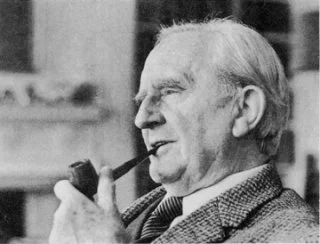The Top-Earning Dead Celebrities
Did you know that Michael Jackson never graced Forbes' annual Celebrity 100 list during his life?
Did you know that in death, the King of Pop earned more in the past year than any star on that list, apart from
Oprah Winfrey?
The Top-Earning Dead Celebrities
Did you know that Michael Jackson never graced Forbes' annual Celebrity 100 list during his life?Did you know that in death, the King of Pop earned more in the past year than any star on that list, apart from
Oprah Winfrey?
Did you know that Jackson not only took the No.1 spot on the Forbes 10th annual ranking of the Top-Earning Dead Celebrities, with gross earnings of $275 million?
Did you know that Jackson out-earned the other 12 stars on the list combined?
No. 1 Michael Jackson
$275 million
Musician
Died: June 25, 2009
Age: 50
Cause: Drug overdose
Musician
Died: June 25, 2009
Age: 50
Cause: Drug overdose
The King of Pop passed away last summer, but he’s made more money over the past year than any musician, dead or alive. His $275 million total was greater than the earnings of the two most profitable living acts, U2 and AC/DC, combined. Jackson's posthumous earnings have been bolstered by shrewd negotiations by his estate, including a merchandising deal and the rights to his name and likeness for the Sony film This Is It, which grossed over a quarter of a billion dollars.
$60 million
Singer, actor
Died: Aug. 16, 1977
Age: 42
Cause: Heart attack
Singer, actor
Died: Aug. 16, 1977
Age: 42
Cause: Heart attack
The King of Rock 'n' Roll’s income ballooned to $60 million, up $5 million from last year, thanks to Graceland admissions and the Elvis Presley Cirque du Soleil spectacular launched in Las Vegas earlier this year. His portfolio of more than 200 licensing and merchandise deals got a nice boost from the late star's 75th birthday celebration. Among the commemorative events: Graceland exhibits, touring tribute concerts and an Elvis-themed cruise to the Bahamas.
No. 3 J.R.R. Tolkien
$50 million
Author
Died: Sept. 2, 1973
Age: 81
Cause: Bleeding ulcer
Author
Died: Sept. 2, 1973
Age: 81
Cause: Bleeding ulcer
The last Lord of the Rings movie hit theaters eight years ago, but Tolkien is still a hot topic in Hollywood. A two-movie adaptation of his book The Hobbit is currently in preproduction in New Zealand. All that Hollywood attention has helped move his books. According to Nielsen, Tolkien sold just shy of 500,000 copies in the last year.
No. 4 Charles Schulz
$33 million
Cartoonist
Died: Feb 12, 2000
Age: 77
Cause: Colon cancer
Cartoonist
Died: Feb 12, 2000
Age: 77
Cause: Colon cancer
The Peanuts brand changed ownership again this year, with Iconix purchasing the cartoon and its characters for $175 million to form Peanuts Worldwide, LLC. With the acquisition, Charles M. Schulz Creative Associates will maintain a 20% stake in the new company. The late Schulz continues to earn from his comic strip, which appears in 2,200 newspapers across 75 countries.
No. 5 John Lennon
$17 million
Musician
Died: Dec. 8, 1980
Age: 40
Cause: Murder
Musician
Died: Dec. 8, 1980
Age: 40
Cause: Murder
It’s been nearly 30 years since The Beatles’ John Lennon was killed in New York City. In what would have been his 70th year, EMI has launched the “Gimme Some Truth” campaign, re-releasing much of Lennon’s catalog, resulting in several Top 10 chart appearances. His estate still earns from the "Beatles Rock Band" videogame and licensing deals with the likes of Cisco and Mont Blanc.
No. 6 Stieg Larsson
$15 million
Writer
Died: Nov. 9, 2004
Age: 50
Cause: Heart attack
Writer
Died: Nov. 9, 2004
Age: 50
Cause: Heart attack
Larsson died before The Girl With The Dragon Tattoo was published, so he didn’t live to see the incredible success of his series of three books, known as The Millennium Trilogy. (A fourth book has reportedly been found.) More than 40 million copies of the books have been sold in 44 languages, and Sony is producing American films based on the books. They will star Daniel Craig as Mikael Blomkvist.
No. 7 Dr. Seuss (Theodor Geisel)
$11 million
Author
Died: Sept. 24, 1991
Age: 87
Cause: Natural causes
Author
Died: Sept. 24, 1991
Age: 87
Cause: Natural causes
With his instantly recognizable rhyming scheme, Dr. Seuss is the best-selling children’s author in history. Horton, the Grinch and his other iconic characters are now reaching audiences through iPhone apps and an attraction at Orlando’s Universal Studios theme park. According to Nielsen, Seuss’ titles are on pace to sell 3 million copies this year.
No. 9 George Steinbrenner
$8 million
Sports Franchise Owner
Died: July 13, 2010
Age: 80
Cause: Heart attack
Sports Franchise Owner
Died: July 13, 2010
Age: 80
Cause: Heart attack
Professional sports has never seen a more iconic franchise owner than George Steinbrenner. The New York Yankees boss carried the club back to its championship heritage, brought a new stadium to the Bronx and took the team’s famous interlocking NY logo global. Although Steinbrenner passed away during the team’s most recent season, he continues to earn as long as the Yankees continue to win.
No. 10 Richard Rodgers
$7 million
Songwriter
Died: Dec. 30, 1979
Age: 77
Cause: Chronic illness
Songwriter
Died: Dec. 30, 1979
Age: 77
Cause: Chronic illness
In 2009 the Netherlands' Imagem Music Group bought the rights to the collaborative catalog of Richard Rodgers and Oscar Hammerstein for a reported $200 million. Without those assets, Rogers still lands on our list, thanks to his earlier work with Lorenz Hart. That catalog boasts such standards as “My Funny Valentine” and “The Lady is a Tramp.”
No. 11 (tie) Jimi Hendrix
$6 million
Died: Sept. 18, 1970
Age: 27
Cause: Barbiturate overdose
Died: Sept. 18, 1970
Age: 27
Cause: Barbiturate overdose
It’s been 40 years since Hendrix died, but his music is still influencing wannabe rockers. His 1967 debut Are You Experienced has been licensed to the third version of the "Rock Band" videogame, and his estate recently released a new batch of previously unheard recordings. Fender Guitars has signed on to present the 2010 Experience Hendrix tour, featuring one of the star’s former bandmates
No. 11 (tie) Steve McQueen
$6 million
Actor
Died: Nov. 30, 1980
Age: 50
Cause: Complications from surgery
Actor
Died: Nov. 30, 1980
Age: 50
Cause: Complications from surgery
Three decades after his passing, the onetime Bullitt star continues to personify cool. McQueen’s image and likeness have been licensed for a host of signature collections for high-end brands like Dolce & Gabbana and Persol sunglasses. More recently he became the face of Tommy Hilfiger’s fall “icon collection” and UBS’ global “We Will Not Rest” campaign.
No. 13 Aaron Spelling
$5 million
Died: June 23, 2006
Age: 83
Cause: Stroke
Died: June 23, 2006
Age: 83
Cause: Stroke
As one of the founding fathers of modern television, Aaron Spelling spent five decades producing long-running, widely syndicated shows such as Charlie’s Angels, Dynasty and 7th Heaven. Although Spelling Television’s contemporary update on Melrose Place was canceled earlier this year, his Beverly Hills 90210revival just began its third season on the CW. Meanwhile, Spelling Entertainment owns the rights to Republic Pictures' archives, including classic films like High Noon and It’s a Wonderful Life.
Now if you didn't know, now you know...




























